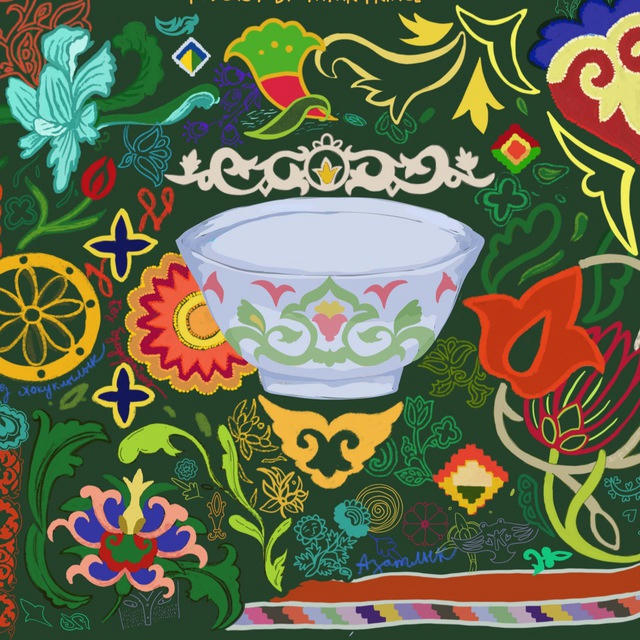#tt_culture
Cıyın
During the post-sowing period, Tatars celebrated the May tawı or May başı festival, a unique event documented in the Uçalı district of Bashkortostan. This women's festival involved women from every village collectively ascending a nearby mountain on May 1st, bringing food and samovars, playing games, and rolling colored eggs down the hill to symbolically ward off illnesses.
Additionally, various Tatar groups practiced a collective sacrificial ritual, which aimed for fertility, livestock prosperity, and general well-being, often linked to appeasing celestial powers and addressing natural disasters like droughts. The sacrificial animals were bought with contributions from the community. The communal event involved men slaughtering the sacrificial animal, preparing a dense soup with meat and grains, followed by communal prayers, reflecting a fusion of pagan rituals and Muslim elements. Kerəşen Tatars made porridge, put it into bowls, made a pit in the middle, poured broth into it, and placed a piece of sacrificial meat on top. After the feast, villagers engaged in water rituals, washing dishes, and sometimes pouring water on each other.
Various terms were used to describe the ritual, such as korban and yañgır keləwe among Mishars. Kerəşennər called these rites qorman botqası or qır keləwe. Kazan Tatars – saban qorbanı or təkəle keləw.
The rain-calling rituals among Tatars varied but typically involved adults or children as main participants. A communal pot of mixed ingredients was used to prepare a porridge, often in open fields, followed by either communal prayers or traditional rituals. The culmination often included water dousing. Children recited:
Yañğır yaw, yaw, yaw
İləktən, çiləktən,
Pərəməçtən, küməçtən,
Bez sorıybız xodaydan
Arıştan, bodaydan.
Arışlarnıñ başları
Aç bulmasın, tuq bulsın.
This ritual has around 30 different names depending on the regions, among them yañğır botqası and telək aşı.
Cıyın
The celebration of Cıyın, a folk festival among Tatars, was typically held in the summer between spring fieldwork and haymaking. The festival names often reflected the villages' identity or local landmarks, and while many were linked to specific Muslim or hydrological events, others borrowed from Christian holidays.
There were two prevalent forms of celebration, both marked by a fixed period of communal festivity, hosting guests from neighboring villages and relatives. The timing was determined by local phenological signs rather than fixed dates: e.g. arış serkə oçırğanda (when the rye is in bloom) or sıyırçıq bala oçırğanda (when the starlings release their chicks from the nests). Each Cıyın region consisting of several villages and named after one of them, organized its own Cıyın.
Preparing for the first variant of Cıyın festival involved meticulous arrangements, with a focus on looking presentable. Traveling guests borrowed festive attire and horse equipment as needed. Each hostess brought treats like küməç, paştet and qaqlağan qaz, to share during the communal festivities. The arrival of guests and communal feasts took place on Thursday, munça (bath rituals) on Friday morning, and later mulla arrived to the aş (lunch) for males and his wife abıstay to the one for females. After the mulla and his wife left, the real party would start with several days of entertainment, even drinking of homemade beer or medovukha (a Slavic honey-based alcoholic beverage) and other deviations from Islamic norms.

